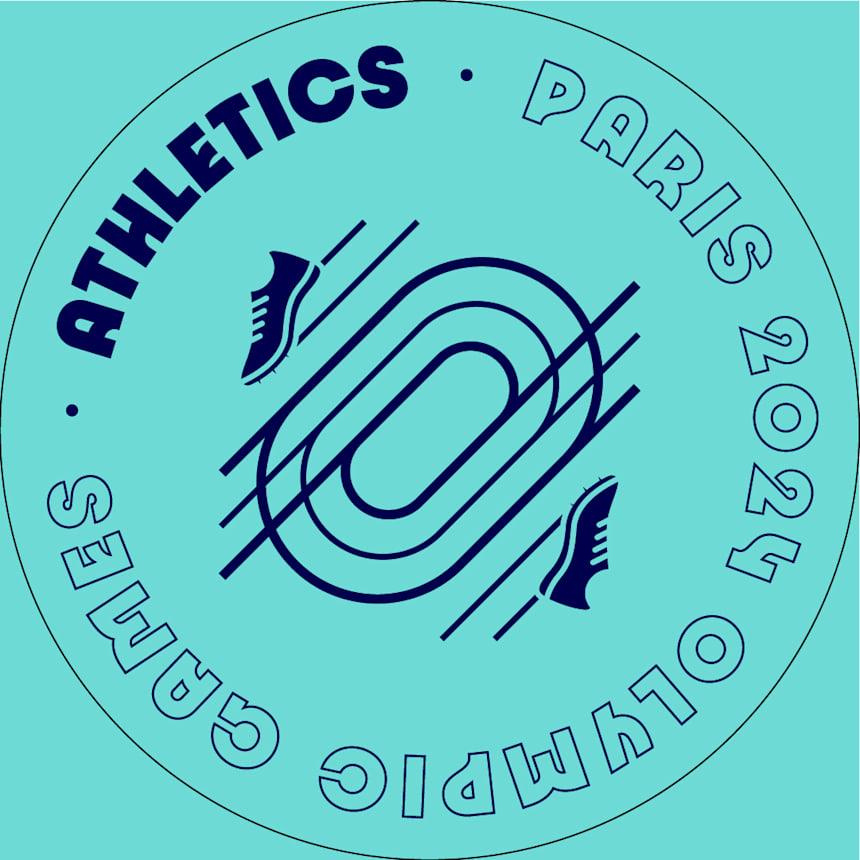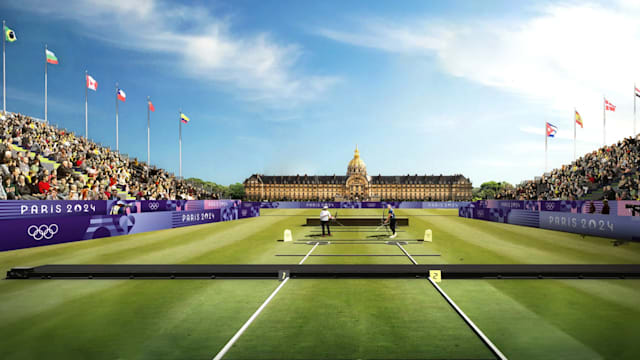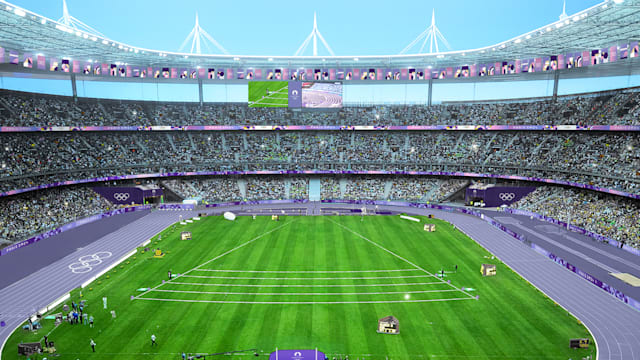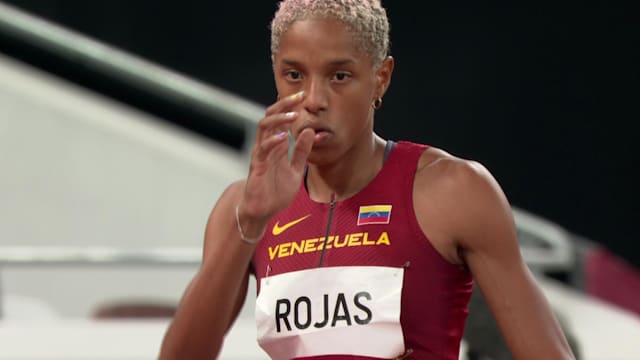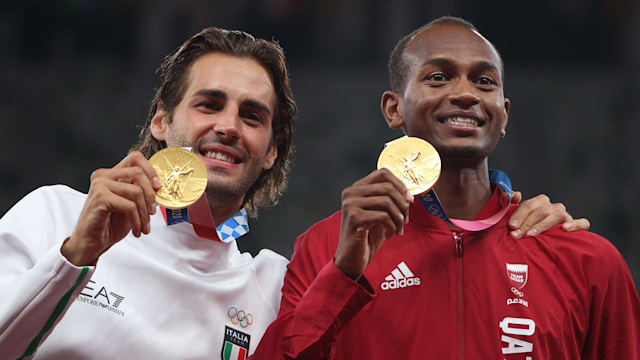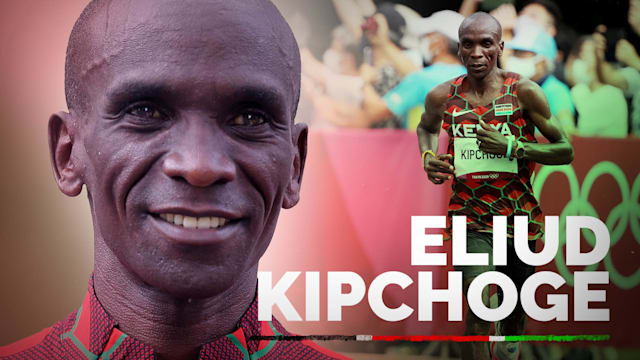

Athletics
Related Content
Contested at the very first ancient Olympic Games, athletics is one of the oldest sports on record, with the names of champions documented from as far back as 776 BC. The ancient Olympic Games included events like the pentathlon, which consisted of a running race, long jump, discus throw, javelin throw, and wrestling. The first meets in modern times that can be likened to the athletics competitions we know today took place in 1840 in Shropshire, England. Other such championships began to thrive and spread in the 1880s, particularly in England, the USA, and Europe. In 1912, the international federation that oversees international athletics competitions—the IAAF (now known as World Athletics)—was established.

Brief overview of the rules
Modern athletics is composed of various running, jumping, throwing, walking, and combined events. Due to its many categories and disciplines, athletics involves the most participants in a single sport at the Olympic Games.
The track programme includes sprints, middle-distance and long-distance events as well as hurdles, steeplechase races, and relays for men and women. These events take place on the 400m oval track in the Olympic stadium (made up of two straights and two curved bends).
Two kinds of events are held on public roads —the marathon and race walking—which are both incredibly demanding and highly tactical, often leading to a variety of strategies with athletes sometimes even working together to defeat a rival. Spectators line the route to watch and cheer the athletes on.
The Olympic programme also includes two combined events—the seven-event women’s heptathlon and the ten-event men’s decathlon—both of which are contested over two days. Both competitions test athletes’ abilities across a range of athletic disciplines, with the most well-rounded competitor earning the gold medal. The disciplines are contested on, within, and around the track in the Olympic stadium, in the jumping area (high jump and pole vault), the jumping pit (long jump and triple jump), the throwing circle (shot put, discus and hammer throw), and the javelin runway. Athletes compete one after another, and the event includes a qualifying stage during which the best athletes secure their place in the final.
Olympic history
It was a logical choice to include athletics at the inaugural Games of the modern Olympics held in 1896 in Athens, Greece. Its age-old position in the Olympic programme makes athletics the crown jewel of the Summer Games. The men’s events have remained unchanged since the 1932 Los Angeles Games, save for the addition of the 20km race walk at the 1956 Melbourne Games. Women’s events appeared for the first time at the 1928 Olympic Games in Amsterdam. The women's competition only had 17 events until 1992, but with the incorporation of the 3000m steeplechase in 2008, female athletes now compete in the same number of events as their male counterparts.
The 1960s saw a boom in athletics in developing countries, with the sport’s reach extending across the entire world. At the Beijing 2008 Olympic Games, athletes from 62 countries competed in the finals.
Schedule
Click here for the schedule
Related Content
Contested at the very first ancient Olympic Games, athletics is one of the oldest sports on record, with the names of champions documented from as far back as 776 BC. The ancient Olympic Games included events like the pentathlon, which consisted of a running race, long jump, discus throw, javelin throw, and wrestling. The first meets in modern times that can be likened to the athletics competitions we know today took place in 1840 in Shropshire, England. Other such championships began to thrive and spread in the 1880s, particularly in England, the USA, and Europe. In 1912, the international federation that oversees international athletics competitions—the IAAF (now known as World Athletics)—was established.

Brief overview of the rules
Modern athletics is composed of various running, jumping, throwing, walking, and combined events. Due to its many categories and disciplines, athletics involves the most participants in a single sport at the Olympic Games.
The track programme includes sprints, middle-distance and long-distance events as well as hurdles, steeplechase races, and relays for men and women. These events take place on the 400m oval track in the Olympic stadium (made up of two straights and two curved bends).
Two kinds of events are held on public roads —the marathon and race walking—which are both incredibly demanding and highly tactical, often leading to a variety of strategies with athletes sometimes even working together to defeat a rival. Spectators line the route to watch and cheer the athletes on.
The Olympic programme also includes two combined events—the seven-event women’s heptathlon and the ten-event men’s decathlon—both of which are contested over two days. Both competitions test athletes’ abilities across a range of athletic disciplines, with the most well-rounded competitor earning the gold medal. The disciplines are contested on, within, and around the track in the Olympic stadium, in the jumping area (high jump and pole vault), the jumping pit (long jump and triple jump), the throwing circle (shot put, discus and hammer throw), and the javelin runway. Athletes compete one after another, and the event includes a qualifying stage during which the best athletes secure their place in the final.
Olympic history
It was a logical choice to include athletics at the inaugural Games of the modern Olympics held in 1896 in Athens, Greece. Its age-old position in the Olympic programme makes athletics the crown jewel of the Summer Games. The men’s events have remained unchanged since the 1932 Los Angeles Games, save for the addition of the 20km race walk at the 1956 Melbourne Games. Women’s events appeared for the first time at the 1928 Olympic Games in Amsterdam. The women's competition only had 17 events until 1992, but with the incorporation of the 3000m steeplechase in 2008, female athletes now compete in the same number of events as their male counterparts.
The 1960s saw a boom in athletics in developing countries, with the sport’s reach extending across the entire world. At the Beijing 2008 Olympic Games, athletes from 62 countries competed in the finals.
Schedule
Click here for the schedule





Events
The Pictogram
